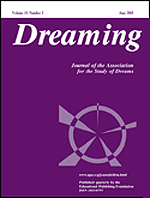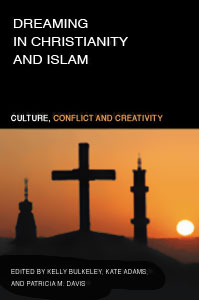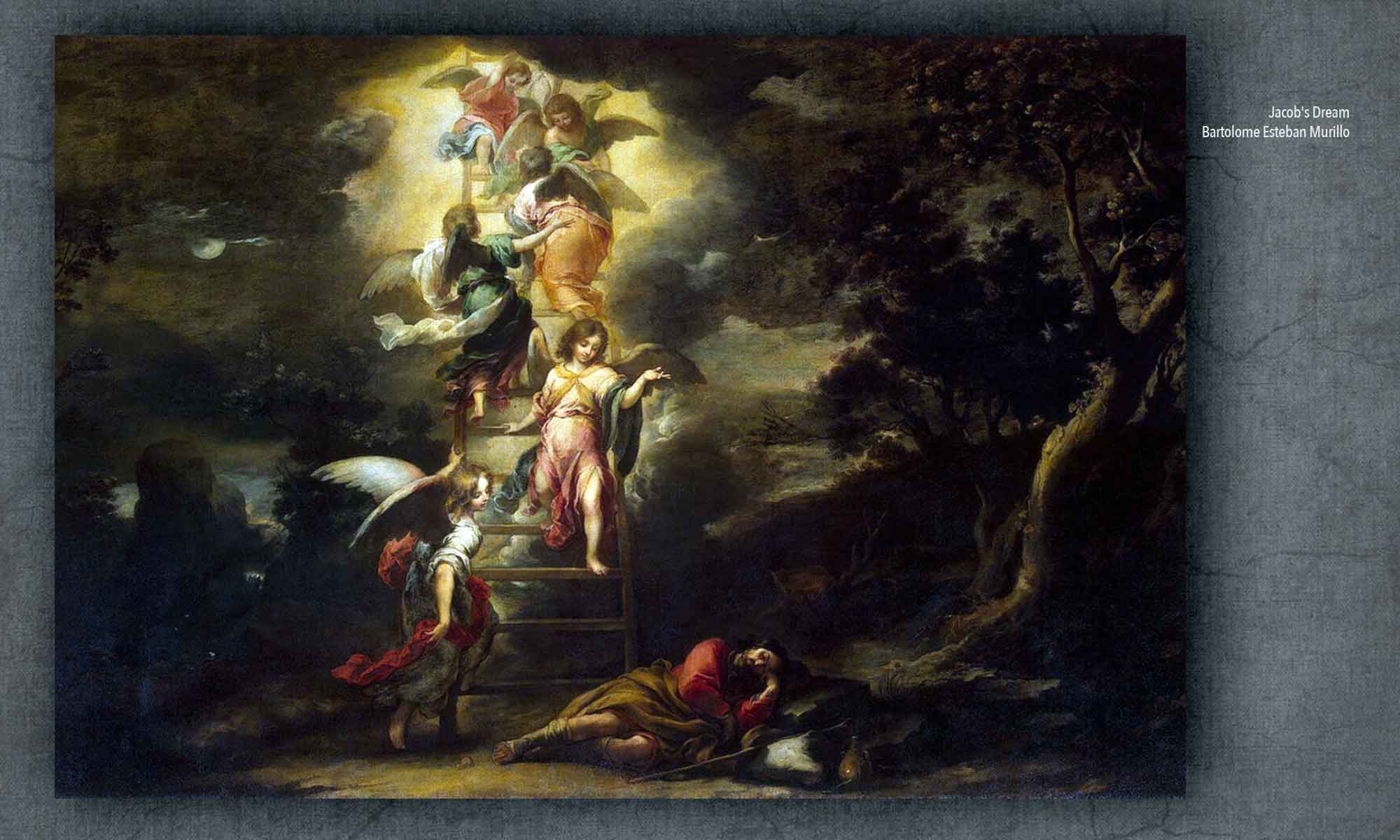 A chapter I wrote with that title appears in the recently published book Disciplining Freud on Religion: Perspectives from the Humanities and Social Sciences, edited by Gregory Kaplan and William B. Parsons (Rowman & Littlefield, 2010). Here is the abstract: “Freud developed psychoanalysis on the basis of a neurological model of human mental functioning. Scholars and clinicians who value Freud’s theories but disagree with his materialist reductionism have generally tried to downplay the neurological roots of psychoanalysis by suggesting that his scientific rhetoric merely reflects a nineteenth-century worldview that Freud’s own ideas were destined to transform. Meanwhile, critics of psychoanalysis have insisted on the inseparability of Freud’s later theories from their earlier medical context, the better to reject psychoanalysis as outmoded pseudoscience. In neither case are Freud’s original interests in the neural underpinnings of psychological life examined with a fair and respectful eye. This chapter aims to recover and update the neurological foundations of psychoanalysis, with a special focus on the implications for Freudian theories and methods in the study of religion.”
A chapter I wrote with that title appears in the recently published book Disciplining Freud on Religion: Perspectives from the Humanities and Social Sciences, edited by Gregory Kaplan and William B. Parsons (Rowman & Littlefield, 2010). Here is the abstract: “Freud developed psychoanalysis on the basis of a neurological model of human mental functioning. Scholars and clinicians who value Freud’s theories but disagree with his materialist reductionism have generally tried to downplay the neurological roots of psychoanalysis by suggesting that his scientific rhetoric merely reflects a nineteenth-century worldview that Freud’s own ideas were destined to transform. Meanwhile, critics of psychoanalysis have insisted on the inseparability of Freud’s later theories from their earlier medical context, the better to reject psychoanalysis as outmoded pseudoscience. In neither case are Freud’s original interests in the neural underpinnings of psychological life examined with a fair and respectful eye. This chapter aims to recover and update the neurological foundations of psychoanalysis, with a special focus on the implications for Freudian theories and methods in the study of religion.”
The Inception Files
It’s reasonable to expect a dream researcher would have a clear, informed opinion about the movie Inception. Unfortunately I don’t. Instead I’m caught between conflicting impressions, some favorable, mostly critical. Three factors inclining my thumb in an upward direction:
1. Christopher Nolan. It’s great to see a brilliant director at the top of his game deciding to do a film entirely about the multiple realities of dreaming.
2. Intellectual daring. As good dreams often do, Inception pushed its audience to think new thoughts and question their epistemological certainties.
3. Accurate portrayal of the “realness” of dreaming: When Ariadne (Ellen Page) is sitting at the sidewalk cafe she suddenly realizes she can’t say how she got there—and in that moment understands she is dreaming. This is true for many people whose dreams start in media res and who simply accept their dreaming experiences as real while they’re happening.
Five problems drawing my thumb downward:
1. Lack of dreaminess. This was the biggest disappointment. For a film supposedly about dreaming, it lacked the visceral power and alluring weirdness of actual dreams. Everything fit together too neatly; every detail in the dream worlds had a direct explanatory cause, whether because of the emotional repression of Cobb (Leonardo DiCaprio), or because of actions in outer reality. It seemed a very cerebral take on dreams.
2. Heavy heavy heavy. The press of gravity seemed to drag everything in the movie down, from the fantastic buildings crumbling into the sea to the elevator down to Cobb’s unconscious basement, from the suicidal plunge of his wife Mal (Marion Cotillard) to endlessly falling passenger van. There was virtually no humor in the movie, no romance, no lighthearted playfulness. Falling is indeed a common experience in dreaming, but that gravity-bound vibe took over the movie.
3. Loud, noisy, and filled with unnecessary action. This may have been necessary to attract teenage boys, but it helped extinguish any kind of truly dreamy atmosphere. On the contrary, all the Bond-esque mayhem and derring-do merely reminded me it was summer and I was in a movie theater paying $10 for a popcorn spectacle.
4. Lame motivation. If I understood correctly after two viewings, Cobb and his crew were risking life and limb to help one mega-corporation stop another mega-corporation from getting too much money and power, so the first mega-corporation could…get more money and power? Of course Cobb has the personal goal of getting back to his kids, but the murky corporate espionage theme made it hard to care about his team and their mission.
5. Didn’t make me forget The Matrix. I re-watched that film with my kids a few nights ago, and we loved every single scene of it–as soon as it was over we wanted to watch it again. I don’t think Inception will generate that kind of long-term reverence and delight.
Detecting Meaning in Dream Reports: An Extension of a Word Search Approach
 A new article I co-authored with Bill Domhoff is appearing in the latest issue of the APA journal Dreaming (vol. 20, no. 2, pp. 77-95). The abstract is below.
A new article I co-authored with Bill Domhoff is appearing in the latest issue of the APA journal Dreaming (vol. 20, no. 2, pp. 77-95). The abstract is below.
What amazed me about this project was how easy it was to make accurate inferences about the waking life of our participant, “Van,” without ever reading his dream narratives–just by looking at the statistical frequencies with which he used certain words in reporting his dreams.
Our findings are additional evidence in favor of the idea that dreaming has meaningful psychological structure, and against the idea that dreaming is merely random nonsense from the brain during sleep.
ABSTRACT:
Building on previous investigations of waking-dreaming continuities using word search technology (Domhoff and Schneider 2008, Bulkeley 2009a, 2009b), this article demonstrates that a blind analysis of a dream series using only word search methods can accurately predict many important aspects of the individual’s waking life, including personality attributes, relationships, activities, and cultural preferences. Results from a study of the “Van” dream series (N=192) show that blind inferences drawn from a word frequency analysis were almost entirely accurate according to the dreamer. After presenting these findings we discuss several remaining shortcomings and suggest ways of improving the method for use by other researchers involved in the search for a more systematic understanding of meaning in dreams.
Bulkeley, Kelly. 2009a. The Religious Content of Dreams: New Scientific Foundations. Pastoral Psychology 58 (2):93-101.
———. 2009b. Seeking Patterns in Dream Content: A Systematic Approach to Word Searches. Consciousness and Cognition 18:905-916.
Domhoff, G. William, and Adam Schneider. 2008. Studying dream content using the archive and search engine on DreamBank.net. Consciousness and Cognition 17:1238-1247.
Dreaming in Christianity and Islam
 At a time when Christianity and Islam appear to be mortal enemies locked in an increasingly bloody “clash of civilizations,” new insights are needed to promote better mutual understanding of the two traditions’ shared values. Dreaming in Christianity and Islam: Culture, Conflict, and Creativity (edited by Kelly Bulkeley, Kate Adams, and Patricia M. Davis (Rutgers University Press, 2009) provides exactly that. This new book is a collection of articles by international scholars who illuminate the influential role of dreaming in both Christianity and Islam, from the very origins of those traditions up to the present-day practices of contemporary believers.
At a time when Christianity and Islam appear to be mortal enemies locked in an increasingly bloody “clash of civilizations,” new insights are needed to promote better mutual understanding of the two traditions’ shared values. Dreaming in Christianity and Islam: Culture, Conflict, and Creativity (edited by Kelly Bulkeley, Kate Adams, and Patricia M. Davis (Rutgers University Press, 2009) provides exactly that. This new book is a collection of articles by international scholars who illuminate the influential role of dreaming in both Christianity and Islam, from the very origins of those traditions up to the present-day practices of contemporary believers.
Dreams have been a powerful source of revelation, guidance, and healing for generations of Christians and Muslims. Dreams have also been an accurate gauge of the most challenging conflicts facing each tradition. Dreaming in Christianity and Islam is the first book to tell the story of dreaming in these two major world religions, documenting the wide-ranging impact of dreams on their sacred texts, mystical experiences, therapeutic practices, and doctrinal controversies.
The book presents a wealth of evidence to advance a simple but, in the contemporary historical moment, radical argument: Christians and Muslims share a common psychospiritual grounding in the dreaming imagination. While careful, sustained attention will be given to the significant differences between the two traditions, the overall emphasis of the book is on the shared religious, psychological, and social qualities of their dream experiences.
Throughout their respective histories Christians and Muslims have turned to dreams for creative responses to their most urgent crises and concerns. In this book the contributors apply that same imaginative resource to the current conflict between the two traditions, seeking in the depths of dreaming new creative responses to the global crisis of religious misunderstanding and fearful hostility. Included in the book are chapters on dreams in the Bible and Qur’an; on the early history of Christian and Muslim beliefs about dreaming; on religious practices of dream interpretation; on the dreams of children, women, college students, and prison inmates; and on the use of dreams in healing, caregiving, and creative adaptation to waking problems.
14 Weirdest Dreams in Hollywood
 The April 2010 issue of the British film magazine Empire includes a feature in which I interpret the dreams of 14 movie actors and directors: Robert Downey, Jr., Kate Winslett, Peter Jackson, Milla Jovovich, Judd Apatow, Kristen Bell, Samuel L. Jackson, Steven Soderbergh, Marion Cotillard, Rachel Bilson, Robert Carlyle, Ray Winstone, and Sam Mendes.
The April 2010 issue of the British film magazine Empire includes a feature in which I interpret the dreams of 14 movie actors and directors: Robert Downey, Jr., Kate Winslett, Peter Jackson, Milla Jovovich, Judd Apatow, Kristen Bell, Samuel L. Jackson, Steven Soderbergh, Marion Cotillard, Rachel Bilson, Robert Carlyle, Ray Winstone, and Sam Mendes.
The editor and “dream wrangler” who gathered the reports, Nick de Semlyen, did not tell me who the dreamers were–all I had to work with were the dreams themselves.
Below are the full commentaries I sent in response, the “director’s cut” as it were. A pdf of the slightly shorter published article can be accessed here:
14 Weirdest Dreams in Hollywood
This method of blind analysis appeals to me because it strictly focuses one’s attention on the themes, symbols, and emotional dynamics of the dream itself, without prematurely seeking connections with the known details of the dreamer’s waking life. This was not a pure experiment, however, because I did know the dreamers were involved in the film industry in some way.
For more on the blind analysis”method of studying dreams, see the paper I recently co-authored with G. William Domhoff, “Detecting Meaning in Dream Reports: An Extension of a Word Search Approach,” which will appear in a forthcoming issue (June, I’m told) of the IASD journal Dreaming.
1) “My favourite dream is one I had in college, I was a homeless person on a bridge, wearing very tattered layers of clothing and the world was cast in this sepia tone and I was fishing with a piece of string off the bridge into the Thames for worms, and I would pull them out and put them in my mouth.”
(Gillian Anderson)
For many people college marks the transition to adulthood, when we leave our families and begin living on our own. Here the dreamer is cast as a homeless person, in a scene of apparent misery and hardship. As a metaphor, this could reflect the concerns a typical college student might feel about difficult life changes and, in a real sense, becoming “home-less.”
But much more seems to be going on. Consider the setting: the River Thames is the most historic waterway in Britain, an ever-flowing source of collective life and cultural power. The dreamer is sitting on a bridge that spans this epic river. She is connected to the water with a string, just as the bridge connects the two sides of land. It’s a remarkable image of elemental symmetry, with the dreamer positioned at the very center.
Then there’s the strange business of backwards fishing. Instead of taking worms from the earth and putting them into the river to go into the mouth of a fish, the dreamer pulls worms out of the river and puts them into her own mouth. It’s the complete reverse of normal fishing—as if she were the one being fished.
The dreamer probably didn’t know it, but the color sepia originally derived from the brownish ink produced by a certain species of fish (sepia means “cuttlefish” in Greek). Details like this may be just a coincidence, but sometimes they point to deeper unconscious meanings.
So this whole dream is enveloped in a strangely “fishy” atmosphere, with a superficial drabness masking a deeper structure and hidden purpose.
It sounds to me like the first chapter of a heroic myth: the youth who begins as the lowest of the low is drawing strength from the waters of her ancestors, getting ready to seek fame, fortune, and adventure out in the wide world.
2) “I had a really cool dream that I was doing a scene with the young Jack Nicholson. Five Easy Pieces era Jack. We were in the desert, with this really rad-looking ’70s car, and I was really killing this scene, being super-great in it. And then the wardrobe people came over and said ‘Oh my God, he’s wearing the wrong colour shirt’ and I was really upset — all this good work I’d done was ruined because Jack’s shirt wasn’t the right colour.”
(Millo Jovovich)
When people dream of celebrities it usually reflects some degree of psychological identification with the public personas of those famous people. The dreams envision us being in the company of powerful, talented people who embody the qualities and strengths we wish to possess ourselves.
When the theme of time travel enters the picture it suggests a quest for a deeper connection, something akin to what Australian Aborigines seek in the Dreamtime, when the ancestors still walked through a freshly created world. An actor’s version today might be something like this dream, going back to a legendary time when movie-making was a daring, creative adventure.
The dream turns into a nightmare, however, when the dreamer is confronted with the brutal fact of her lower status on the actor’s totem pole. No matter how good her work may be, her career is still vulnerable to the whims of bigger stars.
3) “I was standing under a huge tree — it must have been on the Serengeti, somewhere in Africa — and I was watching my family being eaten by lions. I had that dream over and over again when I was a kid… I’m guessing it came from some programme I saw on the telly. For that reason I’ve never been to Africa and I would never take my family there. Even now I’m shit scared of lions and when I go to the zoo I get the feeling that they can smell me and they’re plotting to get me. I’ll tell you how ridiculous my fear of them is: my daughter had to go to South Africa last year to do a film and I was begging her not to go. Because of the lions.”
(Ray Winstone)
There might be something more to the symbolism of the lions for this dreamer, perhaps having to do with family aggression or masculine authority. The persistence of this fear from a childhood dream into adulthood makes me wonder if this is a person who, for better or for worse, puts great trust in his instincts and gut-level reactions.
4) “When I was nine years old, I dreamed I was a hippo in a ballerina skirt, like the one in Fantasia. It got worse, because I had to pee in my dream and when I woke up I’d wet my bed. That’s pretty embarrassing, right?
(Rachel Bilson)
It shouldn’t be. Bedwetting in childhood is fairly common, and certainly nothing to be ashamed of. A precocious desire to perform in the movies comes through in this dream, and also perhaps a warning that too much “fantasy” can interfere with impulse control and taking care of one’s basic physical needs.
5) “I’m coming into a modern city and the buildings are charging each other with electricity, like big Tesla coils. Then I go on a date with two twins and they kill me at the end. Analyse that.”
(Robert Downey, Jr.)
The vivid image of an electrically surging city, followed by the lustful fantasy of dating twins, leads to an abrupt end with the dreamer’s death. As a brief set of images, whether from a dream or not, it does accurately portray the up-and-down psychology of a manic episode. During such episodes the cognitive line between waking and dreaming can effectively disappear.
6) “I have this dream about falling all the time. People say that if you ever hit the ground in a falling dream you’ll have a heart attack and die. So I try to stay with the dream and see what happens. I’ve actually fallen from very high distances, hit the ground, gone through and ended up in water. But I can still breath and finally end up in air again. Then I start flying. It’s a very cool dream; I kind of look forward to it now.”
(Samuel L. Jackson)
One of the general functions of dreaming is to expand our conscious sense of possibility and keep our minds flexible, adaptive, and open to alternative perspectives. In this case the dreamer pushes the process further than most people are willing to go. In many religious traditions these would be considered mystical experiences, and the dreamer might be taken aside for special training as a healer or shaman.
Some research has suggested that people who can guide their dreams like this have better physical balance and spatial coordination in waking life. Perhaps this dreamer is a dancer or an athlete of some kind?
7) “The recurring one from my childhood was the witch of the west walking up my road, bending each lamp post over and blowing out each lamp one by one as she got closer and closer, and when she blew out the last lamp I woke up…like wailing. It happened over and over again.”
(Sam Mendes)
I don’t know anything about the dreamer’s personal life, but his nightmares reveal a painful truth: death is coming to get us. The reference to the Witch of the West from “The Wizard of Oz” indicates an early turn to movies as a refuge from this fear. Movies offer the fantasy of immortality—if death is cast as the wicked witch, perhaps the dreamer can be like Dorothy and escape her clutches.
Although it might seem cruel for a child to be confronted so early with the dark specter of mortality, such dreams mark a valuable step in the development of mature consciousness. Most of the world’s religious traditions regard an acceptance of death as the key to true wisdom.
Sleep, Dreaming, and Human Health
 Dominican University’s Albertus Magnus Society will present a lecture titled “Sleep, Dreaming, and Human Health” by Dr. Kelly Bulkeley, visiting scholar at the Graduate Theological Union in Berkeley, California, on Thursday, February 11 at 7:00 p.m. The lecture will be held in Priory Campus Room 263, 7200 W. Division Street, River Forest. The event is free and open to the public.
Dominican University’s Albertus Magnus Society will present a lecture titled “Sleep, Dreaming, and Human Health” by Dr. Kelly Bulkeley, visiting scholar at the Graduate Theological Union in Berkeley, California, on Thursday, February 11 at 7:00 p.m. The lecture will be held in Priory Campus Room 263, 7200 W. Division Street, River Forest. The event is free and open to the public.
Bulkeley will explain how sleep and dreaming are natural processes hard-wired into the human brain, as well as universal portals into religious experience and spiritual insight. He will describe current scientific research on the health benefits of sleep and the evolutionary functions of dreaming. He will integrate these findings with philosophical and religious teachings about the healing power of dreams.
Established in 2006 by the Siena Center of Dominican University, the Albertus Magnus Society pursues new information and insight in a setting that is both scholarly and congenial, and reflects the Dominican understanding of the compatibility of religion and science. The society was named for Albertus Magnus, patron saint of scientists, and thirteenth century Dominican famed for scientific discoveries and a theology reflective of the emerging science of his day. For more information on the Albertus Magnus Society, please call (708) 714-9105 or visit the website at http://www.dom.edu/ams.

